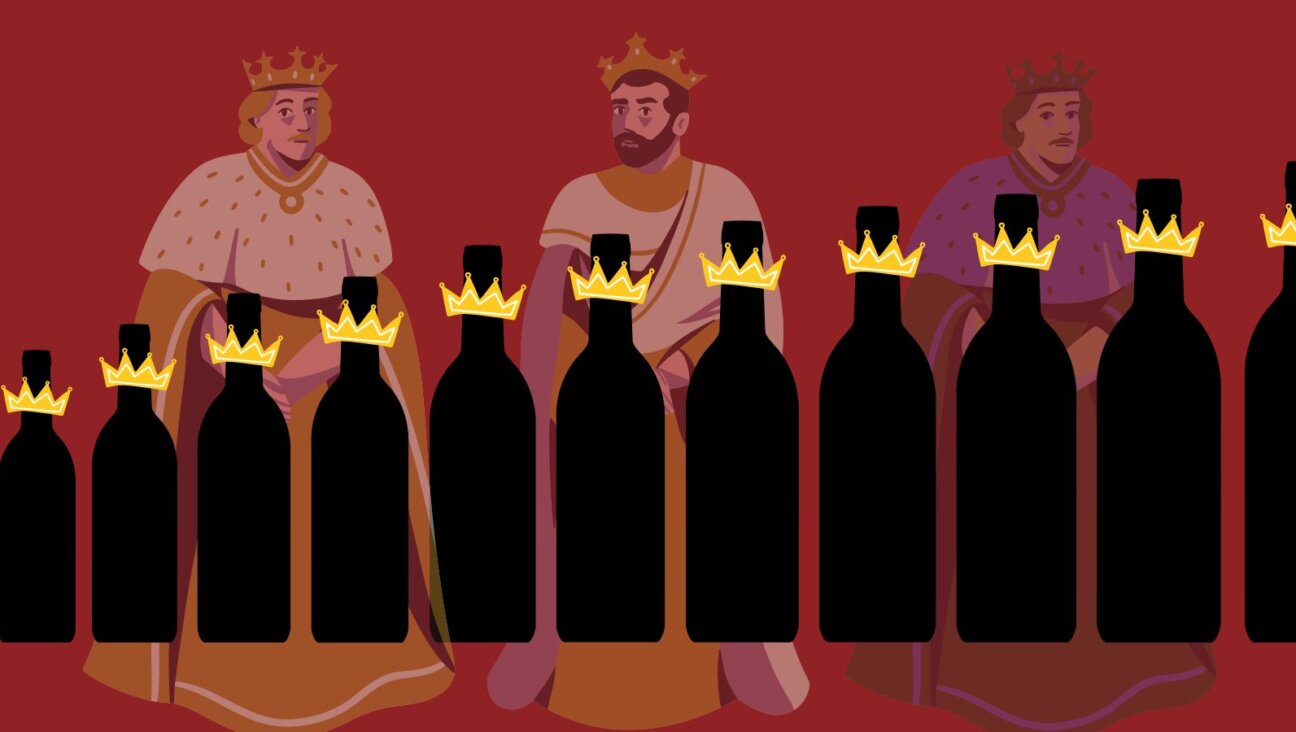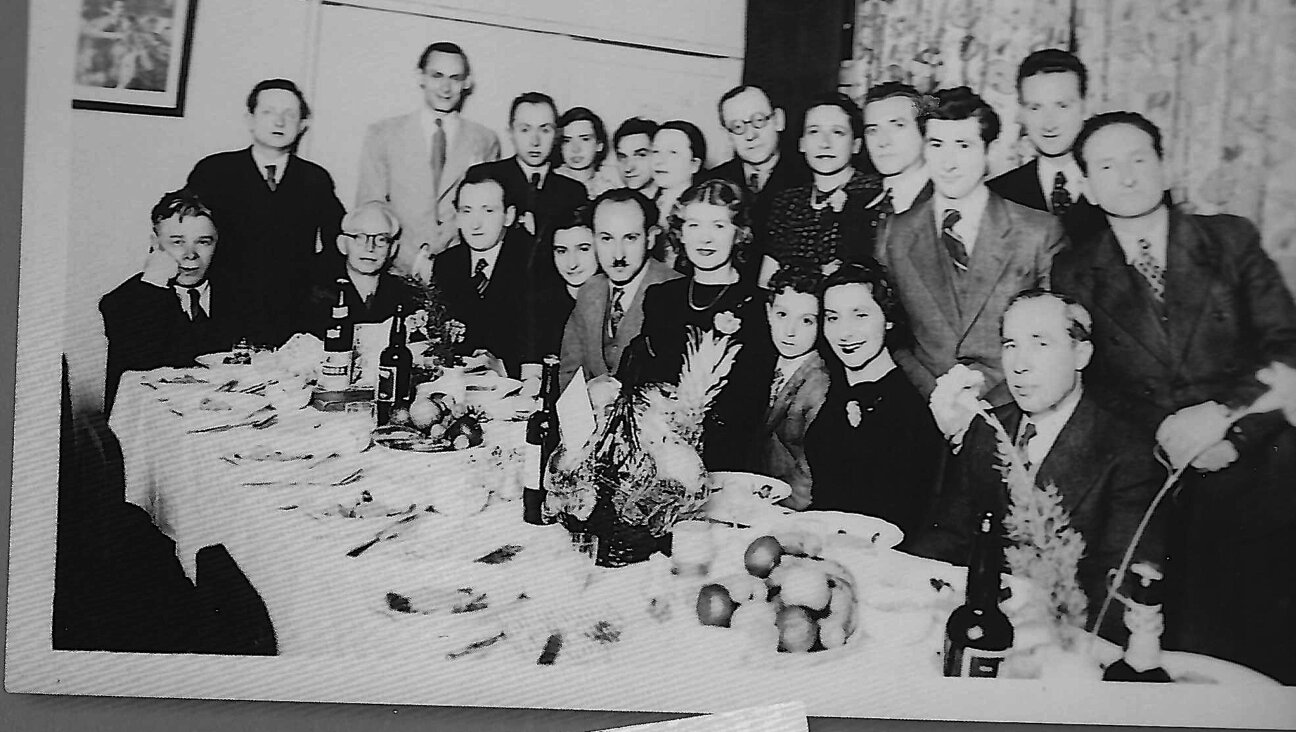Dan Miron’s Authoritative Answer


From Continuity to Contiguity: Toward a New Jewish Literary Thinking
By Dan Miron
Stanford University Press, 560 pages, $65
Dan Miron’s “From Continuity to Contiguity” is a work of Jewish literary theory — an exceedingly erudite one, and in some ways the most important to appear in recent decades — that reads a little like a mystery novel. The book begins with the idea that “continuity” is dead as a model for studying Jewish literature, and Miron, the Leonard Kaye Chair of Hebrew and Comparative Literature at Columbia University, even tells us who killed it: “the so-called Tel Aviv structuralist school of poetics.”

Miron mourns this passing, but he makes clear that he has no illusions about resuscitating the corpse. Instead of continuity — by which he means approaches to Jewish literature that emphasize the connectedness across time of, say, Biblical verse, the medieval poetry of Judah ha-Levi and Chaim Nachman Bialik’s poems, or, through space, the connectedness of Hebrew and Yiddish letters in the early 20th century — he posits “contiguity” as the new principle that must inform our thinking about Jewish literature.
But at first he doesn’t really explain what contiguity is, or what it looks like, and he allows the suspense to build over hundreds of pages that amount to a bravura chronological autopsy of the continuity model as it developed in the literary histories and critical essays of outstanding exponents of modern Jewish literary study, including Baruch Kurzweil, Shmuel Niger, Shimon Halkin and Dov Sadan. Evincing deep respect for these figures, acknowledging that he writes very much in their tradition, Miron also brutally remarks on their weaknesses, from Kurzweil’s “insufficient knowledge of the facts” of post-enlightenment literature to Sadan’s inability to read in English or French.
Miron’s central problem with these extraordinary critics is that they all believed, in one sense or another, in a continuous, unified Jewish literature. Niger, for one, echoed Baal-Makhshoves in a slim book called “The Bilingualism of Our Literature,” arguing that all Jewish literature, whether written in Hebrew, Yiddish or another language, forms a continuum, while Sadan articulated a rich vision of “a single, comprehensive Jewish culture and literature whose current fragmentation was temporary.” Such views were perniciously mistaken, Miron argues, leading these critics and their followers to neglect crucial writers. As recently as 2001, Sadan was invoked as an authority when the late Israeli critic Gershon Shaked dismissed as “artificial and ridiculous” the idea that Marcel Proust or Norman Mailer might be understood as having been a Jewish writer.
Miron can afford to criticize the finest scholars of Hebrew and Yiddish modernism — and, though he wastes fewer words on them, those Tel Aviv structuralists, too — because of his own unassailable authority in these fields. For half a century he has produced meticulously close readings and critical histories in Hebrew, Yiddish and English of such literary masters as Sholom Aleichem, Mendele Mocher Sforim, Bialik and Uri Zvi Greenberg. Few literary scholars working in any linguistic or cultural arena equal him in their command of their material. He has chatted about literary matters with the greatest scholars and writers of his times: Gershom Scholem and S.Y. Agnon, Yankev Glatshteyn, Max Weinreich, Irving Howe and others. The list he offers of his “erstwhile students” includes many of the most dynamic scholars currently active in the fields of Hebrew and Yiddish literature. And while some of his peers have branched out (Robert Alter devoting considerable energy to translating the Torah, Ruth Wisse to her political essays), Miron has remained preternaturally focused.
It is the breadth of his purview and the sharpness of his perception that allow Miron to reject, with enough force to make it stick, the venerable idea of a unified Jewish literature. In “From Continuity to Contiguity,” he reads the bilingualism of the iconic Hebrew and Yiddish literary pioneer S.Y. Abramovitch, better known as Mendele (who was also, years ago, the subject of Miron’s doctoral dissertation at Columbia), as evidence of the lack of unity of the Jewish literatures of the late 19th and early 20th centuries: “Whoever heard about ‘one and only one’ national literature in which an author writes the same text twice, with no practical necessity justifying the effort of duplication?” (A lengthy appendix, almost a full book of its own, delves into Abramovitch’s bilingualism in finer detail.)
After his historical survey of Jewish “meta-literary discourse,” Miron turns to a study of Kafka’s correspondence, diaries and fiction, which reveals how intensely — and, for that matter, mistakenly — the creator of Gregor Samsa responded to the modern Hebrew and Yiddish culture of his time. Finally getting around to showing how contiguity can operate as a critical paradigm, Miron offers an illuminating reading of Sholom Aleichem’s “Tevye the Dairyman” as contiguous to Kafka’s stories: contiguous in the sense that while Sholom Aleichem and Kafka wrote within radically different linguistic and literary milieus, both writers “embraced passivity, weakness, wordiness, inertia, and minority.” It turns out that contiguity is not so mysterious: It is just about any relation between texts that is more ambivalent, or stranger, less concrete or predictable, than what we refer to as influence and intertextuality.
His insightful readings notwithstanding, what is most energizing about Miron’s “new literary thinking” is not the notion of contiguity itself, but its consequences. The crucial contribution of the book is that in it, an unparalleled expert in modern Hebrew and Yiddish literatures argues ferociously and conclusively that these languages can claim no monopoly on literary Jewishness. On one level, this admission simply ratifies the status quo at American universities, where Jewish studies programs have for some time typically increased their reach by including, on their lists of affiliated faculty, professors in German or Russian or Portuguese literatures who teach Heinrich Heine or Isaac Babel or Moacyr Scliar. Indeed, Ruth Wisse argued more or less the same point a decade ago in “The Modern Jewish Canon.”
Yet Miron has gone further, declaring “Jewish” any text that “evinces an interest in or is in whatever way and to whatever extent conditioned by a sense of Judesein, being Jewish.” Much freer and more inclusive than Wisse’s canon — more like a Jewish version of Pascale Casanova’s “The World Republic of Letters” (Harvard University Press, 2004) — Miron’s “Jewish literary complex” is “just that… a complex, a multifarious entity consisting of different connected, semi-connected, and unconnected particles.” One that, as he is quick to acknowledge, parallels the diverse experiences of Jews, wherever and however they live.
“From Continuity to Contiguity” may not be perfect — it is full of typos and at times repetitive — but it crackles with energy and wisdom, and yet remains accessible even to committed nonscholars. It should be pored over not just by those who study modern Jewish literatures professionally, but also by every reader who understands those literatures as among the richest and most stunning achievements of modern Jews.

I hope you appreciated this article. Before you go, I’d like to ask you to please support the Forward’s award-winning journalism this Passover.
In this age of misinformation, our work is needed like never before. We report on the news that matters most to American Jews, driven by truth, not ideology.
At a time when newsrooms are closing or cutting back, the Forward has removed its paywall. That means for the first time in our 126-year history, Forward journalism is free to everyone, everywhere. With an ongoing war, rising antisemitism, and a flood of disinformation that may affect the upcoming election, we believe that free and open access to Jewish journalism is imperative.
Readers like you make it all possible. Right now, we’re in the middle of our Passover Pledge Drive and we need 500 people to step up and make a gift to sustain our trustworthy, independent journalism.
Make a gift of any size and become a Forward member today. You’ll support our mission to tell the American Jewish story fully and fairly.
— Rachel Fishman Feddersen, Publisher and CEO
Join our mission to tell the Jewish story fully and fairly.
Our Goal: 500 gifts during our Passover Pledge Drive!























